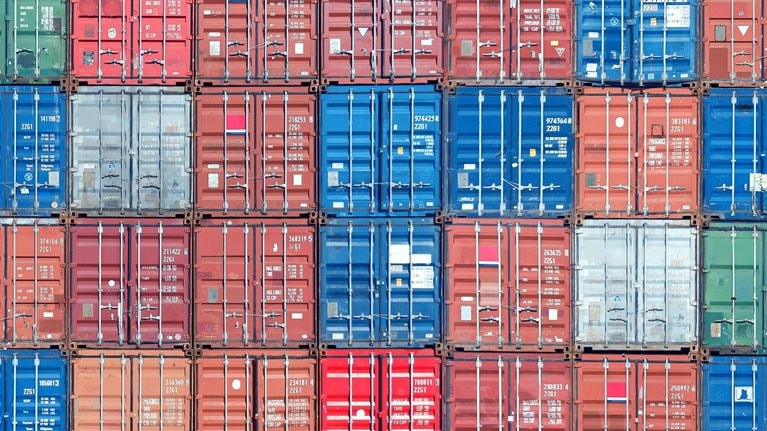
Freight transport has significant environmental consequences, primarily due to its substantial greenhouse gas (GHG) emissions, which contribute to both climate change and air quality deterioration. Understanding these impacts is crucial for devising effective strategies to mitigate them.
Greenhouse Gas Emissions

The transport sector is a major contributor to global GHG emissions, accounting for approximately 26% of the UK’s total emissions in 2021, where domestic transport alone emitted 109 million tonnes of CO2 equivalent. This figure reflects a 10% increase from 2020, though it remains below historical levels. Road vehicles are particularly notorious, generating 91% of domestic transport emissions, which primarily come from cars, taxis, heavy goods vehicles (HGVs), and vans[3]. Freight transport, including both domestic and international shipping, is a significant component of this overall impact, with estimates indicating that logistics emissions from freight and warehousing account for at least 7% of global GHG emissions[6].
Transport emissions further vary by mode, with studies indicating that passenger cars emit more GHGs per passenger mile than trains and coaches, highlighting the efficiency of transport modes in the context of emissions per distance travelled[3]. This raises concerns about the environmental efficiency of traditional freight methods compared to potentially greener alternatives.
Air Quality Deterioration

In addition to contributing to GHG emissions, freight transport significantly affects local air quality. It produces substantial quantities of air pollutants, including nitrogen oxides and particulate matter. In the UK, transport was responsible for 32% of nitrogen oxide emissions and 14% of particulate matter emissions in 2021[3]. These pollutants pose serious health risks and contribute to environmental degradation, exacerbating issues such as smog and respiratory diseases in urban areas.
The Role of Infrastructure

The efficiency of freight transport is intrinsically linked to the condition and management of transportation infrastructure. The European Commission has proposed measures to improve rail infrastructure management. These proposals aim to optimize the use of rail capacity, consequently attracting more freight companies to rail transportation—an inherently greener option compared to road transport[5]. Improved rail efficiency not only reduces emissions but also minimizes congestion, which is another contributor to increased transport-related emissions.
Decarbonization Challenges
Despite the recognition of the environmental impacts of freight transport, the sector has been slow to implement comprehensive decarbonization strategies. Decarbonization necessitates addressing 'Scope 3' emissions, which are indirect emissions from a company’s supply chain, particularly from logistics activities. Many companies are beginning to integrate green shipping into their logistics programs, with over 70% willing to pay more for environmentally friendly shipping services[6]. However, many still lag in setting and achieving decarbonization targets; a McKinsey survey revealed that nearly half of companies have no formal decarbonization goals in place[6].
Carriers are often hesitant to invest in low-carbon shipping solutions due to uncertainties surrounding new technologies and a lack of immediate, high-quality supply. Many traditional freight methods face increased pressure to adopt sustainable technologies, but initial costs and technological readiness remain significant barriers[6]. The shift towards greener alternatives, such as electric trucks or sustainable aviation fuels, requires substantial upfront investment and collaboration across the supply chain to be viable.
Innovative Solutions
Innovative solutions, such as the Blue Visby Solution, aim to enhance shipping efficiency by reducing waiting times at ports and optimizing sailing speeds. This approach has reportedly resulted in CO2 emissions reductions of between 7.9% and 28.2% for vessels participating in trials[7]. Additionally, as global organizations increasingly demand sustainability in supply chains, there are emerging practices to better align shipping operations with sustainability goals. For example, intermodal transport, which integrates multiple transport modes, can improve efficiency and reduce emissions by consolidating shipments and optimizing routes[5][6].
Conclusion
Freight transport has profound environmental impacts, driven primarily by greenhouse gas emissions and air pollutants. The sector faces challenges in implementing decarbonization due to uncertainties surrounding new technologies and investment costs. However, with initiatives aimed at optimizing freight methods and enhancing infrastructure efficiency, there is potential for significant reductions in the environmental footprint of freight transport. Efforts such as promoting rail transport, adopting innovative logistics solutions, and compelling companies to integrate sustainability into their operations are critical for achieving meaningful progress in reducing transport emissions and improving air quality.
Get more accurate answers with Super Pandi, upload files, personalized discovery feed, save searches and contribute to the PandiPedia.
Let's look at alternatives:
- Modify the query.
- Start a new thread.
- Remove sources (if manually added).